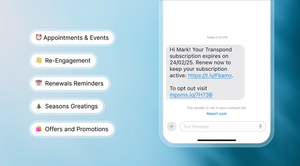The first step is always the hardest, right? Especially in marketing. Figuring out where to begin can feel overwhelming. We get it – there's a lot to juggle, from setting goals to understanding your audience. That's why we've put together this guide, packed with marketing plan templates and tips to ease those initial pains and get your marketing plan off the ground.
Let's tackle this together and turn those big challenges into even bigger wins!
Digital marketing plan template elements
Think of digital marketing plan elements as your box of Lego bricks, each one unique and essential.
We've got different shapes and sizes: target audience, digital channels, content strategies - all ready to click together. Below, you'll find examples you can use for your marketing strategy template.
Executive summary
Executive summary is the first thing stakeholders, such as board directors or potential investors, read. Therefore, it must be compelling and informative, offering a clear picture of what the marketing plan entails and aims to achieve.
In a sense, it's like a movie trailer – giving the audience enough to pique their interest and understand the plot without revealing all the details.
A well-crafted executive summary outlines the target market, key marketing initiatives, and the channels through which these will be executed, such as social media or other digital platforms. It also touches upon the marketing budget and how resources are allocated across various campaigns.
Also, it's a tool for efficiency. Busy executives may not have the time to read through the entire plan and check all the listed marketing initiatives. A compelling executive summary allows them to grasp the core aspects quickly.
Business goals
Setting business goals isn't just a box-ticking exercise. Every marketing plan should include this element.

Many marketers only think of WHAT to achieve, not HOW to achieve it. A measurable business goal gives you this advantage, along with purpose and direction.
Without clearly defined goals, your marketing strategy is like a rudderless ship. Marketing goals give your efforts direction, transforming your marketing plan from a wish list into a strategic blueprint.
How to craft your objectives?
- SMART Goals are:Specific, Measurable, Achievable, Relevant, and Time-Bound objectives that help guide your decision making process.
- The digital world is changing faster than ever before. So, when you're setting those goals try to make them flexible and future proof.
- Customer's feedback is like a gold mine. So make the most of that information to shape your goals and hit the mark.
- Your marketing goals need to be in sync with what your whole business is doing. So, make sure your marketing moves are grooving with your company's big picture.
With business goals, you're crafting a narrative of where you want your brand to go and how you'll get there.
Target audience analysis
Many marketers focus on broad demographics, missing the nuances of who they actually should be speaking to and why.Understanding your customers offers clarity and clarity is essential in business.
Without a thorough understanding of your audience, your marketing strategy can feel like a shot in the dark. Target audience analysis turns guesswork into precision, and shapes your marketing plan. Every insight should resonate with your brand's core message and values.
Understanding your target audience is about crafting a story – their story.
Market analysis
Every strategic marketing plan needs market analysis. Otherwise, how do you know the parameters that you’re working in?
Without this analysis, your marketing strategy might miss the mark. Market analysis provides the chart for your journey to help you avoid unseen obstacles.
How do you conduct this analysis? By piecing together:
- market segments,
- consumer behaviors,
- and competitive dynamics.
The market is a living, breathing entity. It evolves, shifts, and reacts. Keep your analysis dynamic, adapting to new trends and changes. You need to move with the waves, not against them.
Unique Selling Proposition (USP)
This element is a must-be in any marketing strategy, it defines what makes your brand different and why customers should care.
Many brands struggle with USP, often echoing other companies and brands But your USP should be like your fingerprint – unique and unmistakable. It's about being authentically you.
Your USP should anchor your brand, with a clear and compelling reason for customers to choose you over others.
Examples of good USPs include:
- Domino's Pizza: "You get fresh, hot pizza delivered to your door in 30 minutes or less—or it's free." With this USP, Domino's Pizza highlights their commitment to speed and quality service.
- FedEx: "When it absolutely, positively has to be there overnight." Such an USP emphasizes FedEx's reliability and speed in delivering packages. And has been doing so since 1978!
- M&M's: "Melts in your mouth, not in your hands." This clever USP addresses a common problem with chocolate, and positions M&M's as a convenient, mess-free option.
- TOMS Shoes: "One for One." For every pair of shoes purchased, TOMS donates a pair to a child in need. It appeals particularly to consumers' desire to contribute to a social cause.
- Zoom: "Video conferencing that is reliable and easy to use." Zoom's USP focuses on simplicity and reliability in a market filled with complex tech solutions. Your USP should resonate through every aspect of your marketing.
Brand messaging
Brand messaging is more than a collection of words to use or avoid. It's your brand's voice. It's how you communicate your essence, values, and personality to the world.
It sounds complicated and time-consuming and it often is but without clear, consistent messaging, your brand can become lost in the noise. Effective brand messaging cuts through the clutter, delivering a clear, resonant message directly to the hearts of your audience.
How do you craft this message?
Think of it as storytelling. Your message should reflect your brand's personality. Is it bold and adventurous? Or thoughtful and nurturing? Let your brand's character shine through in every word.
Digital channels strategy
There are hundreds of marketing channels available. Your company's marketing strategy should focus on just a few of them at first, and then scale as you see fit.
- Start by pinpointing where your target customers are most active.
- Choose channels that are popular with your audience, whether it's social media platforms, email, or search engines.
- Match each channel to your specific marketing objectives. For instance, if you want to raise brand awareness, social media and content marketing might be ideal.
- Analyze where your competitors are thriving and identify any gaps.
- Use this insight to select channels that offer the best potential for engagement and conversion.
- Initially, test a variety of channels to see which ones yield the best results. This could include a combination of social media marketing, SEO, PPC campaigns, and influencer partnerships.
- Each channel should complement the others, creating a unified and cohesive marketing effort.
- Regularly review the performance of each channel using analytics tools.
- Be prepared to adapt your strategy, shifting focus to the channels that provide the best ROI.
With a few key channels – and gradually scaling up with more if needed – your company can create a powerful digital channels strategy that is both effective and manageable.
SWOT analysis
SWOT analysis is a simple way to get to know what you're really good at, where you might need a little help, what exciting opportunities are out there for you, and what challenges you might face in your marketing strategies.
Strengths: what you're awesome at
Maybe you're amazing at coming up with new ideas, or perhaps people love how you always put customers first. These are the things that make your brand special and loved, and worth being put in your marketing plan.
Weaknesses: room for a little growth
We all have things we're not perfect at, and that's okay. Your brand's weaknesses are just areas where you can grow. It's like knowing you're not great at cooking but still trying out new recipes. Failing is more than fine here!
Opportunities: exciting new adventures
Opportunities are like doors, and it's up to you if you decide to open them. Maybe there's a new market you can explore or new marketing channels you can use? These are chances for your brand to try something new and exciting.
Threats: challenges to overcome
Threats are the tough parts. They might be a bit scary, but they're also chances for your brand to get ahead with its marketing plans.. Face these challenges head-on and come out stronger.
Competitive analysis
Competitive analysis is a must-have for any marketer crafting a marketing plan.
Without knowing what your competitors have under their sleeves, how will you ensure your plan is better?

Here's why and how to use competitive analysis:
- Understand your competition: Know what your competitors are doing. Look at their social media, marketing campaigns, and how they engage their audience. All that market research for a clear picture of what's working in your industry and what's not.
- Refine your strategy: Do you already have some marketing strategy? Use insights from your competitive analysis to sharpen your winning marketing plan outline. If you see a gap in your competitors' approach, that's your chance to stand out. Tailor your digital marketing and social media strategies to capitalize on these opportunities.
- Set realistic goals: Everyone wants to beat their competition, but it doesn't happen overnight. Knowing what your competition is into and how they perform can help you set more achievable marketing goals. This helps in aligning your marketing efforts with realistic targets.
- Stay updated: Markets change rapidly, especially in digital marketing. Regular competitive analysis keeps your marketing department on top of trends and helps you adapt quickly.
- Better Targeting: Knowing your competitors' audience can help refine your target audience. This leads to more personalized and effective marketing tactics.
Incorporate competitive analysis into your marketing plan template. It's not just about copying what others are doing – but finding your unique angle and competitive edge.
Customer journey mapping
Customer journey mapping is like drawing a map of your customer's adventure with your brand.
It's all about understanding their experience from the moment they first hear about you, through all the interactions they have with your business, like checking out your social media posts or visiting your website. This helps your marketing team see things from your customer's point of view, making it easier to create marketing plans that really speak to what your customers want and need.
When you add customer journey mapping to your marketing plan, you get a clearer picture of the important steps your customers take. This helps you fine-tune everything from your social media strategy to your email campaigns, making sure you're hitting the right notes at the right time.
Key Performance Indicators (KPIs)
Key Performance Indicators (KPIs) are essential for measuring the success of your marketing plan. Here are some effective KPIs that can be included in your marketing plan templates:
- Conversion Rate: Measures the percentage of visitors who take a desired action, crucial for evaluating the effectiveness of your marketing strategy.
- Customer Acquisition Cost (CAC): Tracks the average cost of gaining a new customer, vital for budgeting and planning in your digital marketing plan.
- Return on Investment (ROI): Calculates the profitability of your marketing efforts, a key metric for any marketing plan template.
- Social Media Engagement: Assesses interactions on social media platforms, important for social media marketing strategies within your marketing plans.
- Website Traffic: Monitors the number of visitors to your website, an indicator of the effectiveness of your digital marketing strategy.
- Lead Generation: Counts the number of new leads generated, aligning with the marketing goals of expanding the customer base.
- Email Open and Click-Through Rates: Evaluates the performance of email marketing campaigns, a part of the marketing mix in many digital marketing plans.
- Brand Awareness: Measures how well your target audience recognizes your brand, a fundamental aspect of your company's marketing strategy.
- Customer Lifetime Value (CLV): Estimates the total revenue a business can expect from a single customer, helping in long-term marketing planning.
- Net Promoter Score (NPS): Gauges customer loyalty and satisfaction, essential for understanding the impact of your entire marketing plan.
We suggest focusing on 2-3 KPIs first, especially if you have never worked on KPIs before.
6 Marketing Plan Templates
Below, you can find a few marketing plan templates we created for various use cases. You can customize each marketing plan template, adjust it to what your marketing team needs, and use it to create your own marketing strategy template, too!
#1 General Marketing Campaign Template for SaaS Companies
Executive Summary
- Objective: Briefly outline the primary business objectives of the marketing plan.
- Key Metrics: Define the metrics for success (e.g., customer acquisition cost, lifetime value, conversion rates).
Company Overview
- Mission Statement: What is the core mission of the company?
- Product/Service Overview: Describe the SaaS product/service in detail.
- Unique Selling Proposition (USP): What sets this product/service apart in the market?
Market Analysis
- Industry Overview: Current trends and future outlook of the SaaS industry.
- Target Market: Define the ideal customer profile (demographics, psychographics, behavior).
- Competitor Analysis: Identify key competitors and their strategies.
SWOT Analysis
- Strengths: Internal attributes that give the company an advantage.
- Weaknesses: Internal limitations or areas for improvement.
- Opportunities: External factors that the company can capitalize on.
- Threats: External challenges that could impact the business.
Marketing Goals and Objectives
- Short-Term Goals: Objectives to be achieved in the next quarter/year.
- Long-Term Goals: Broader objectives for the next 3-5 years.
- Key Performance Indicators (KPIs): Metrics to measure progress towards these goals.
Marketing Strategies
- Product Strategy: Enhancements, updates, or changes to the product/service.
- Pricing Strategy: Pricing model and any planned adjustments.
- Promotion Strategy: Channels and tactics for promoting the product (e.g., content marketing, social media, email campaigns, webinars).
- Distribution Strategy: How the product will be delivered to customers.
Marketing Channels
- Digital Marketing: SEO, PPC, social media, email marketing, content marketing.
- Partnerships: Collaborations with other companies or influencers.
- Events and Webinars: Participation in industry events, hosting webinars.
- Public Relations: Media outreach, press releases.
Budget
- Marketing Budget Breakdown: Allocation of funds across different channels and activities.
- ROI Forecast: Expected return on investment for each marketing activity.
Action Plan
- Timeline: Key milestones and deadlines.
- Responsibilities: Who is responsible for each action item.
- Resources Needed: Tools, software, and other resources required.
Monitoring and Evaluation
- Performance Tracking: How will the results of marketing efforts be monitored?
- Adjustment Plan: How will the strategy be adjusted based on performance data?
Conclusion
- Summary: Recap of the main points of the plan.
- Next Steps: Immediate actions to be taken to implement the plan.
#2 Social Selling Digital Marketing Plan Template for Sales Teams
Executive Summary
- Objective: Outline the primary goals of the social selling initiative.
- Key Metrics: Define success metrics (e.g., engagement rate, lead generation rate, conversion rate).
Overview of Social Selling
- Definition: Explain what social selling is and its relevance in the current market.
- Benefits: Highlight the advantages of social selling for sales teams.
Target Audience Analysis
- Buyer Personas: Detailed profiles of ideal customers.
- Platform Preferences: Identify which social media platforms these personas use most.
Competitor Benchmarking
- Competitor Presence: Analyze competitors' social selling tactics.
- Best Practices: Identify successful strategies used by competitors.
Social Selling Goals and Objectives
- Short-Term Goals: Immediate objectives (e.g., growing followers, increasing engagement).
- Long-Term Goals: Broader objectives (e.g., establishing thought leadership, generating qualified leads).
- KPIs: Specific metrics to track progress.
Social Media Platform Strategy
- LinkedIn: Tactics for leveraging LinkedIn for B2B engagement.
- Twitter: Strategies for using Twitter to engage in industry conversations.
- Facebook/Instagram: If relevant, methods for using these platforms for brand building.
- Other Platforms: Consideration of other platforms like TikTok or YouTube, if applicable.
Content Strategy
- Content Mix: Types of content to be shared (e.g., blog posts, industry news, company updates).
- Content Calendar: Schedule for posting content.
- Personal Branding: Guidelines for salespeople to build their personal brand on social media.
Engagement Strategy
- Community Building: Tactics for engaging with followers and building a community.
- Direct Outreach: Guidelines for initiating direct conversations with potential leads.
- Response Management: Plan for responding to comments and messages.
Training and Resources
- Social Selling Training: Training sessions for sales teams on effective social selling techniques.
- Content Creation Tools: Tools and resources for creating engaging content.
- CRM Integration: Integrating social selling activities with CRM systems.
Budget and Resources
- Budget Allocation: Funds allocated for social selling activities (e.g., ads, tools).
- Resource Allocation: Human and technical resources required.
Monitoring and Evaluation
- Performance Tracking: Systems for tracking engagement, leads, and conversions.
- Regular Review Meetings: Schedule for reviewing progress and adapting strategies.
Action Plan
- Implementation Timeline: Key milestones and deadlines.
- Roles and Responsibilities: Assigning specific tasks to team members.
Conclusion
- Summary: Recap the main points of the plan.
- Next Steps: Immediate actions for implementing the plan.
#3 One Page Marketing Plan Template for Influencer Campaigns
Introduction
- Purpose: Define the aim of the influencer marketing campaign.
- Expected Outcomes: Outline what the campaign intends to achieve (e.g., increased brand awareness, lead generation).
Market Context
- Industry Trends: Current trends in influencer marketing within the SaaS sector.
- Target Audience Insights: Deep dive into the preferences and behaviors of the target audience on social media.
Influencer Identification
- Criteria for Selection: Define the criteria for choosing influencers (e.g., audience size, engagement rate, niche relevance).
- Research Methodology: How influencers will be identified (e.g., using tools, agencies, manual search).
Influencer Outreach Strategy
- Initial Contact: Methods and templates for initial outreach.
- Negotiation Framework: Guidelines for negotiating terms and compensation.
Campaign Planning
- Campaign Objectives: Specific goals for each influencer partnership (e.g., content creation, product reviews, brand mentions).
- Content Guidelines: Outline of content requirements and brand messaging.
- Timeline: Schedule for campaign rollout with each influencer.
Collaboration and Execution
- Collaboration Tools: Tools and platforms for managing collaborations (e.g., communication tools, content approval processes).
- Content Calendar: Detailed calendar for when influencers will post content.
- Legal and Compliance: Ensuring all partnerships adhere to legal requirements and industry standards.
Budgeting
- Budget Allocation: Detailed budget for each aspect of the campaign.
- Cost-Benefit Analysis: Expected ROI for the influencer marketing campaign.
Monitoring and Analytics
- Key Metrics: Define metrics to measure the success of the campaign (e.g., reach, engagement, conversion rates).
- Reporting Tools: Tools and software for tracking and analyzing campaign performance.
Optimization and Scale
- Feedback Loop: Process for gathering feedback from influencers and audiences.
- Scaling Strategy: Plan for scaling successful partnerships and phasing out less effective ones.
Review and Future Planning
- Post-Campaign Analysis: Comprehensive review of campaign performance.
- Learnings and Adjustments: Insights gained and adjustments for future campaigns.
Conclusion
- Recap: Summarize the key components of the plan.
- Action Items: List immediate next steps for implementation.
#4 Content Marketing Plan Template for Retail Businesses

Overview
- Purpose of the Plan: Define the role of content marketing in the overall marketing strategy.
- Business Goals Alignment: How content marketing supports the broader business objectives.
Audience Analysis
- Customer Segments: Detailed profiles of different customer segments.
- Content Preferences: Insights into the types of content preferred by each segment.
Content Strategy Development
- Content Pillars: Key themes or topics around which content will be created.
- Content Types: Variety of content formats to be used (e.g., blogs, videos, infographics, social media posts).
- Storytelling Approach: How the brand's story will be woven into the content.
Channel Strategy
- Owned Channels: Strategy for the business's website, blog, and social media.
- Earned Channels: Plan for gaining coverage in external media, blogs, and other outlets.
- Paid Channels: Use of paid advertising to amplify content reach.
Content Creation Process
- Content Calendar: Schedule for content creation and publication.
- Resource Allocation: Assigning responsibilities for content creation, editing, and publishing.
- Quality Control: Standards and processes to ensure content quality and brand alignment.
SEO and Keyword Strategy
- Keyword Research: Identifying relevant keywords for SEO.
- SEO Optimization: Integrating keywords into content to improve search engine rankings.
User Engagement and Interaction
- Call-to-Actions (CTAs): Strategies for encouraging customer interaction and engagement.
- User-Generated Content: Encouraging customers to create and share content.
Measurement and Analytics
- Key Performance Indicators (KPIs): Metrics to track content performance (e.g., traffic, engagement, conversion rates).
- Analytics Tools: Tools and software for measuring content effectiveness.
Budgeting and ROI
- Budget Allocation: Financial planning for content creation and distribution.
- ROI Measurement: Methods for assessing the return on investment of content marketing efforts.
Optimization and Adaptation
- Feedback Mechanisms: Gathering customer feedback on content.
- Continuous Improvement: Regularly updating and refining the content strategy based on analytics and feedback.
Crisis Management
- Content Sensitivity Review: Ensuring content is appropriate and sensitive to current events and social issues.
- Response Plan: Strategy for addressing any negative responses or crises related to content.
Conclusion
- Summary and Key Takeaways: Recap of the main elements of the plan.
- Next Steps: Immediate actions for implementing the content marketing strategy.
#5 PPC Advertising Plan Template for Lead Generation Agency
Introduction
- Objective: Define the primary goals of the PPC campaigns (e.g., lead generation, brand awareness).
- Scope: Outline the extent of the PPC activities (platforms, budget, duration).
Market and Audience Analysis
- Target Market: Detailed description of the target audience for each client.
- Customer Journey: Understanding of the customer's path to conversion.
- Competitive Landscape: Analysis of competitors' PPC strategies.
Campaign Strategy
- Campaign Objectives: Specific goals for each PPC campaign (e.g., cost-per-lead, conversion rate).
- Keyword Strategy: Research and selection of high-intent keywords.
- Ad Copy and Creative: Development of compelling ad copy and creative elements.
Platform Selection
- Google Ads: Strategy for using Google Ads, including search, display, and remarketing campaigns.
- Social Media Advertising: Use of platforms like Facebook, LinkedIn, or Instagram for targeted ads.
- Other Platforms: Consideration of other PPC platforms like Bing Ads or industry-specific channels.
Budgeting and Bidding
- Budget Allocation: Distribution of the overall budget across campaigns and platforms.
- Bidding Strategy: Approach to bidding on keywords (e.g., manual bidding, automated strategies).
Landing Page and Conversion Optimization
- Landing Page Design: Creation of optimized landing pages for each campaign.
- Conversion Tracking: Setup of conversion tracking to measure campaign effectiveness.
Compliance and Legal Considerations
- Ad Compliance: Ensuring all ads comply with platform guidelines and legal requirements.
- Data Privacy: Adherence to data privacy laws and regulations.
Monitoring and Analytics
- Performance Metrics: Key metrics to track (e.g., click-through rate, cost-per-click, conversion rate).
- Analytics Tools: Utilization of tools for tracking and analyzing campaign performance.
Optimization and Scaling
- A/B Testing: Continuous testing of ad copy, keywords, and landing pages.
- Campaign Adjustments: Regular optimization of campaigns based on performance data.
- Scaling Strategy: Plan for scaling successful campaigns and reallocating budget from underperforming ones.
Reporting and Communication
- Client Reporting: Format and frequency of performance reports to clients.
- Internal Communication: Coordination within the team for campaign management and optimization.
Risk Management
- Budget Overruns: Strategies to prevent and address overspending.
- Market Changes: Plan for adapting to changes in market conditions or platform algorithms.
Conclusion
- Summary: Recap of the PPC advertising strategy.
- Next Steps: Immediate actions for campaign setup and launch.
#6 Strategic Marketing Plan Template for Email Marketing Campaigns
Introduction
- Purpose: Define the role of email marketing within the broader marketing strategy.
- Goals: Outline specific objectives (e.g., increasing sales, customer retention, brand loyalty).
Audience Segmentation
- Customer Profiles: Create detailed profiles of different customer segments.
- Segmentation Strategy: Plan for segmenting the email list (e.g., by purchase history, preferences).
Content Strategy
- Email Types: Variety of emails to be sent (e.g., newsletters, promotional, transactional).
- Content Themes: Key themes and topics that resonate with the target audience.
- Brand Voice and Style: Guidelines to ensure consistency with the brand's identity.
Design and Layout
- Template Design: Creation of visually appealing email templates.
- Mobile Optimization: Ensuring emails are mobile-friendly.
- Visual Elements: Use of images, videos, and graphics that align with brand aesthetics.
Personalization and Customization
- Personalization Techniques: Strategies for personalizing emails (e.g., using the recipient's name, past purchase history).
- Dynamic Content: Incorporating content that changes based on the recipient's preferences or behavior.
Scheduling and Frequency
- Email Calendar: Schedule for when emails will be sent.
- Frequency Optimization: Determining the optimal frequency of emails to maximize engagement without overwhelming subscribers.
Automation and Triggered Emails
- Automation Strategy: Use of automated email sequences (e.g., welcome series, abandoned cart emails).
- Trigger Events: Identification of events that trigger automated emails.
Compliance and Privacy
- Legal Compliance: Adherence to email marketing laws and regulations (e.g., GDPR, CAN-SPAM Act).
- Subscriber Management: Process for managing opt-ins and opt-outs.
Testing and Optimization
- A/B Testing: Testing different elements of emails (subject lines, content, send times).
- Continuous Improvement: Regular review and optimization of email campaigns based on performance data.
Analytics and Reporting
- Key Metrics: Metrics to track (e.g., open rate, click-through rate, conversion rate).
- Reporting Tools: Tools and software for analyzing email campaign performance.
Integration with Other Marketing Channels
- Cross-Channel Promotion: Strategies for integrating email with other marketing channels (social media, website, in-store promotions).
Risk Management
- List Health: Strategies for maintaining a healthy email list (e.g., re-engagement campaigns, list cleaning).
- Crisis Communication: Plan for using email in crisis situations or to address negative feedback.
Conclusion
- Recap and Summary: Overview of the key components of the email marketing strategy.
- Action Plan: Steps for implementing the strategy.
How often should you update a marketing plan?
Updating a marketing plan should be a regular activity to ensure that it remains effective and aligned with business goals. Typically, a marketing plan should be reviewed quarterly.
This allows you to adjust your marketing initiatives based on current market trends and performance metrics.
For instance, if your target market shifts due to new competitors or changing consumer behavior, a quarterly review will help you stay relevant.
On top of that, conducting regular market research helps you keep track of these changes. Reassessing your marketing budget quarterly ensures that funds are allocated to the most effective strategies.
Your marketing plan outline should include a mission statement, SWOT analysis, and updated marketing materials. Using a free marketing plan template can simplify this process.
For example, if new opportunities arise from a recent SWOT analysis, you can quickly incorporate them into your plan.
Regular updates keep your plan dynamic and responsive, ensuring continuous alignment with your business's mission and goals.
Why should you add crisis management strategies to your marketing plan?
Crisis management is an important yet often overlooked component of any comprehensive marketing plan. When unexpected issues arise, such as public relations crises, social media backlash, or market downturns, a well-prepared strategy can make all the difference.
In any case, it's better to have a contingency and never use it than not to have one and be found lacking when the time comes.
With a crisis management section in your marketing plan, your brand can respond quickly and effectively.
You don't need to make it as lengthy or serious as it sounds. Only a few elements need to be included, at least at first.
Start by identifying potential risks through thorough market research to anticipate challenges and develop contingency plans. In your industry, what usually causes crises? Has your competition ever faced a crisis? How impactful was it?
Your marketing plan outline should include:
- protocols for managing negative press,
- templates for social media and email communication,
- addressing customer concerns,
- allocating resources to mitigate damage.
On top of that, ensure that your marketing budget accounts for crisis-related expenses, such as additional marketing initiatives or public relations efforts.
It’s a good idea to set clear key performance indicators to monitor the impact of your response. This will help you evaluate how quickly your marketing initiative addresses the crisis and its effectiveness in the aftermath. The data will also provide you with a better understanding of how to deal with the next crisis.
In a free marketing plan template, you can include a section with basic guidelines for dealing with crises, offering structured guidance on what to do, whom to contact, when to react, and what to avoid.
Even a few points of a crisis management plan can safeguard your brand's reputation and minimize any potential disruptions.
How Capsule can help you fulfill your marketing strategy
Excellent marketing plan templates are a good starting point. However, you might need more robust tools to bring those plans to life. And we happen to know a great one.
Capsule offers a comprehensive suite of features that can turn your digital marketing plan template into a fully functional strategy. Here's how:
- Capsule's CRM capabilities allow you to better understand and manage your interactions with current and potential customers. It makes it easier for you to tailor your marketing strategies to your target audience, based on data.
- With Capsule, all your customer data is organized and easily accessible. Your marketing team can quickly find the information they need to make informed decisions, aligning with your company's marketing strategy.
- Capsule seamlessly integrates with a variety of marketing tools and platforms, so all your marketing activities are in sync.
- Capsule helps you track the effectiveness of your marketing campaigns. With key performance indicators (KPIs) and analytics, you can measure the success of your marketing efforts and adjust your strategies as needed.
- Capsule's user-friendly interface and tools simplify the marketing planning process. This makes it easier to develop, implement, and monitor your marketing plan – all under one roof.
- Capsule extends beyond just being a CRM tool – it can easily become an integral part of executing a successful marketing plan.
How about starting right now and putting your successful marketing plans into motion?
Conclusion
With your marketing plan template in hand, you're now fully equipped to construct a marketing plan that's as detailed and dynamic as any Lego creation. The strength of your marketing efforts lies in how well you piece together the elements of your plan.
Discover how Capsule can help you manage your customer data with our 14 day free trial.
FAQ on marketing plan templates
A successful marketing plan presentation should include a comprehensive overview of your marketing activities, tailored marketing strategies, and a clear digital marketing campaign outline. You can find good marketing plan examples online, which often feature strategic marketing plan templates and marketing campaign templates. These examples can be particularly helpful for those running their own business or involved in event marketing.
A free marketing plan can be a great starting point, especially for small businesses or startups. It helps you understand different marketing strategies and how to apply them to gain a competitive advantage. Look for a plan that covers various aspects like social media calendars, distribution channels, and market strategy to ensure a comprehensive approach.
Your product marketing plan template should align with your overall market strategy by focusing on key areas such as identifying your buyer persona, defining your marketing goals, and outlining specific marketing activities. Ensure it includes a section for digital marketing campaigns and event marketing to cover all bases.
To develop a strong marketing strategy, start with a solid marketing plan that includes a detailed social media marketing plan. This should involve creating a social media calendar, defining clear marketing goals, and understanding your buyer persona. For online marketing, focus on tailored marketing strategies that resonate with your target audience.
Absolutely! Look for a simple marketing plan template that emphasizes clarity and ease of understanding. A one-page marketing plan or an actionable marketing plan can be effective. These templates help keep everyone on the same page and ensure that your marketing activities align with your objectives.
A comprehensive marketing plan offers a detailed roadmap covering all aspects of marketing, from strategic planning to execution. It differs from a solid marketing plan or a good marketing plan template in its depth and breadth, often including advanced elements like detailed analysis of distribution channels, extensive market strategy, and a variety of tailored marketing strategies. This type of plan is ideal for businesses seeking a thorough approach to marketing success.




